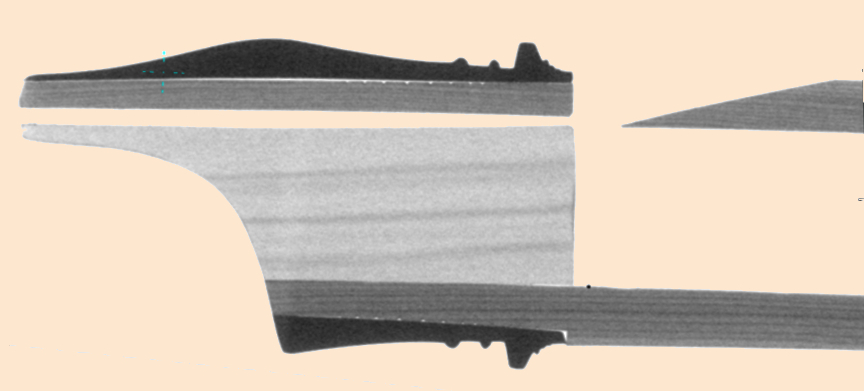PHILIPPE BOLTON
flageolets & recorders
An unsigned "beak" flageolet
This flageolet was probably made in the late eighteenth or early nineteenth century. It bears no maker's stamp


This tomographic picture reveals the inide profile of this instrument, showing up a fairly wide bore giving a strong low register. The tone holes are only slightly undercut.

The picture below shows a section view of the beak, with the converging windway with its two chamfers which help to stabilise the airflow where it enters the turbulent zone at the top of the bore. Note the curved windway profile, particularly that of the block, and the low position of the labium.
In its present state the block could not be removed from the instrument. This technique enabled the inaccessible measurements in the head to be taken.

The minute grooves cut into the wood to reinforce the glueing of the horn beak can also be seen (the small white dots between the horn ring and the wood).

a copy of this flageolet in boxwood with horn rings